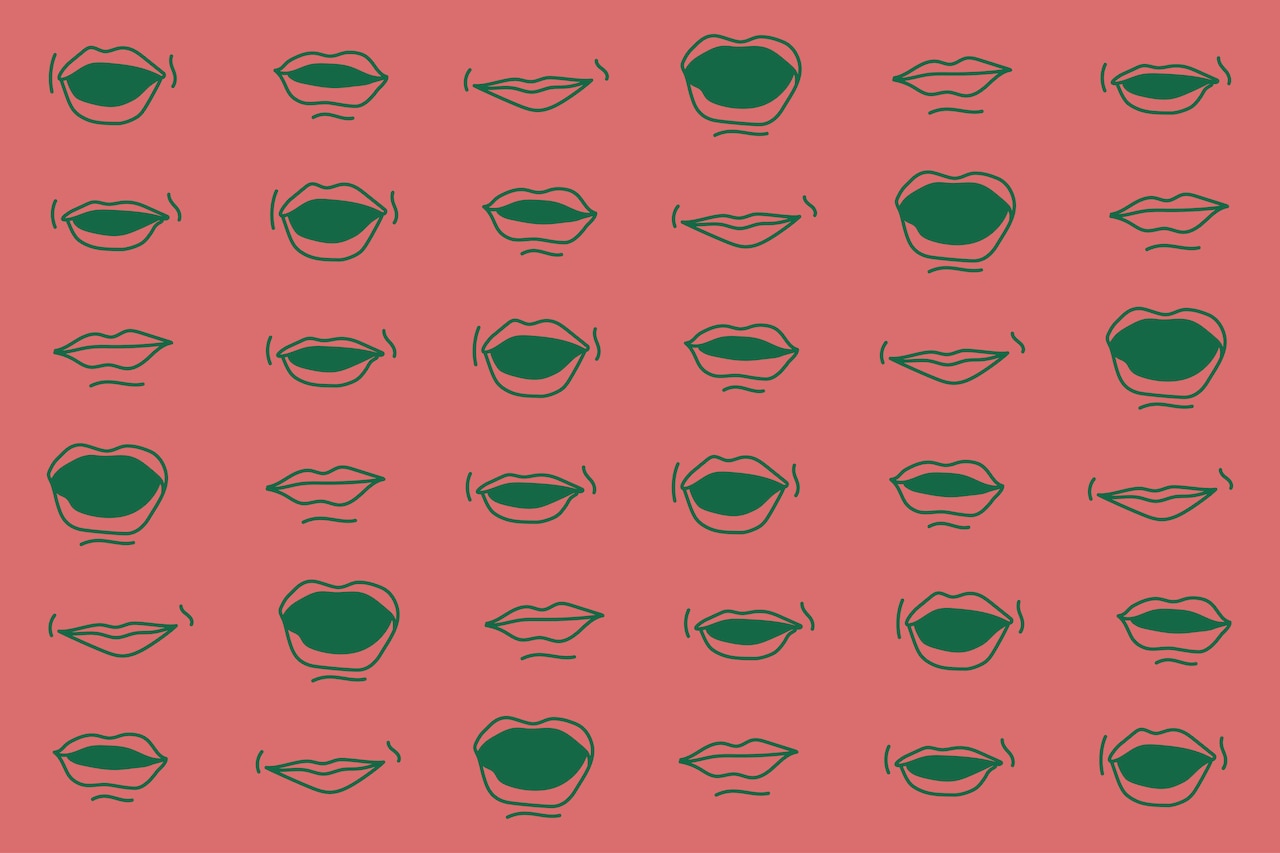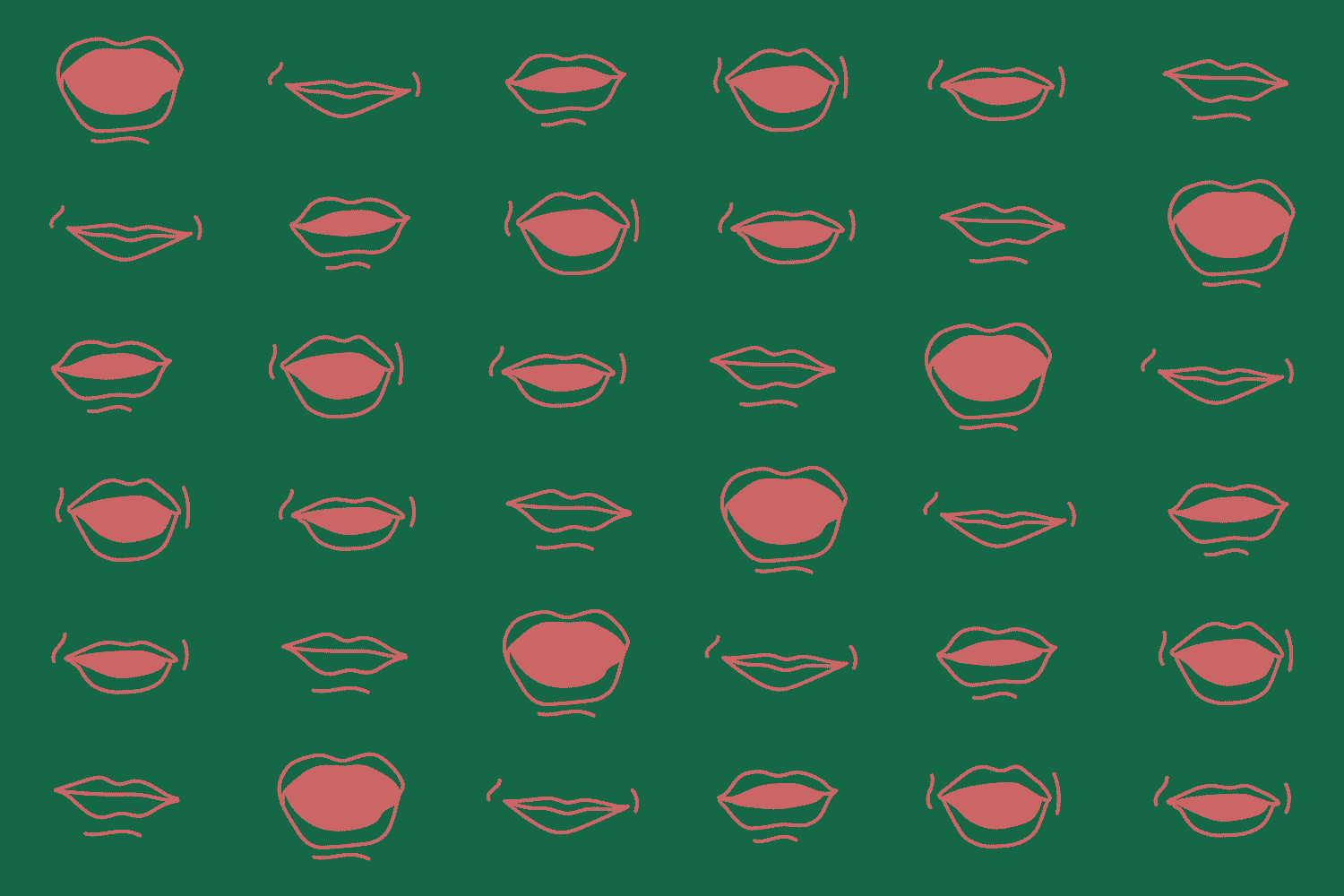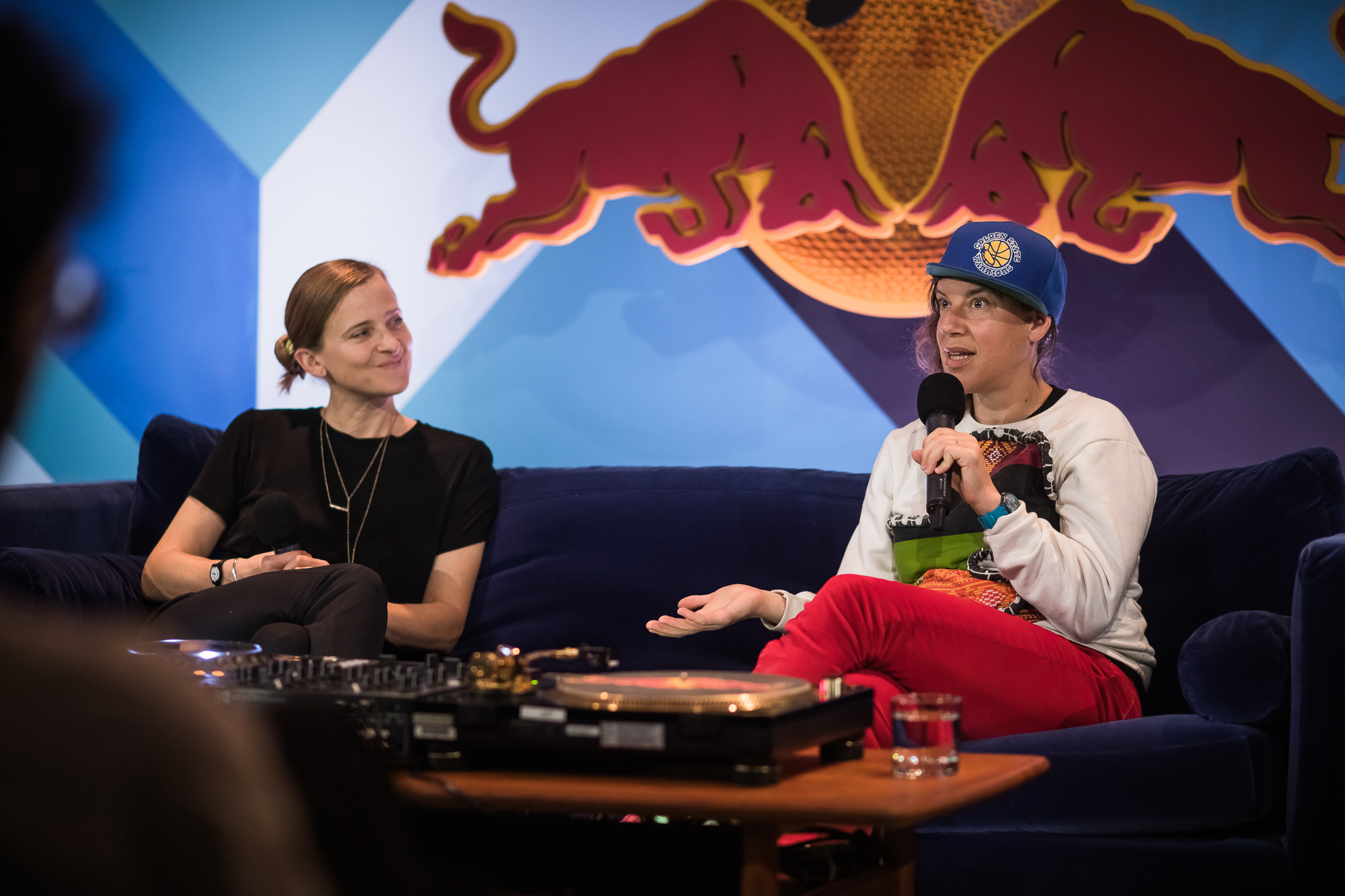The Evolution of Hocketing
Eli Zeger on the origins of a complex and conversational vocal technique, from its use by African Pygmies to appearance in modern contexts

The musical technique known as hocketing has been shaping creative processes for centuries, appearing in forms ranging from medieval classical music to contemporary indie rock and EDM. Hocketing either involves instruments taking turns playing discrete portions of a single melody, normally at a rapid tempo and in fluid succession, or two instruments playing in a call-and-response. A guitar, for instance, plays do-re-mi; a saxophone plays fa-so-la; piano finishes with ti-do and the cycle of instruments repeats. Whether listening to hocketing in headphones or hearing it played by musicians positioned at different points around a stage, the technique can make you feel like you’re inside the melody. Compared to counterpoint, which involves layering different melodies on top of each other, hocketing is essentially a fraction of the work, with the goal being singularity rather than plurality. It’s a device based on dialogue: If counterpoint is multiple voices talking over each other, then hocketing is conversational.
Although widely believed to have originated in medieval classical music, hocketing actually dates back to African music from over 80,000 years ago. It began as a solely vocal tradition, practiced by the Central African Pygmies in tropical forests and the Bushmen of the Kalahari Desert, according to musicologist Dr. Victor Grauer in his “Echoes Of Our Forgotten Ancestors.” Just as medieval composers evidently never interacted with hocketing peoples in Africa, to the point of presuming they invented the form, the Pygmies and Bushmen evidently never interacted with each other. Yet both African peoples hocketed specifically in their vocal ensembles and for the same symbolic purpose, in Grauer’s words, of “echoing forgotten ancestors.” Early hocketing eventually translated to instruments. Ghanaian flutes, called atentebens, didn’t have a definitive model – they were made of different materials and varied in shape and size – but were each confined to a single octave range. In atenteben ensembles, whether or not limited octave ranges were deliberate, they were compensated for by the timbral variety of hocketing with multiple flutes.
Hocketing was first transcribed in formal compositions from the 13th and 14th centuries, appearing in pieces such as “Manere,” written by the composer Anonymous of St. Emmeram, and in “Hoquetus David,” by the French composer Guillaume de Machaut. Whether performed as a capellas or with traditional medieval instruments, both pieces demonstrate the technique specifically in their upper-voice parts, intertwining varied patterns of whole notes, half notes and rests in order to achieve the fractured sonic effect. It’s this transcription that has led to the assertion that the form came first from these classical styles, and not Africa. In addition to sheet music, not only was the term “hocket” first recorded in European archives (albeit in a slightly alternate spelling), but the general maintenance of exhaustive institutional documentation written in Latin is what legitimized the European composers over the African ones. Anonymous of St. Emmeram first described hocketing in a treatise from 1279, now preserved as a manuscript, that was published by the Notre Dame Cathedral in Paris. In Africa, though, hocketing was not documented in text, but in the live performance traditions that had already existed for hundreds of centuries prior to Anonymous and his ecclesiastical ilk.
How did separate musical cultures, thousands of miles and hundreds of years apart, with no record of direct interaction, manage to develop such a similar-sounding technique? It’s likely to do with a shared, innate desire for practicality. “It seems to me that hocketing is a natural solution to the problem of how to arrange melodies among multiple vocal parts, so my guess would be that it was invented independently,” Dr. Patrick Savage, a musicologist at the Keio University Shonan Fujisawa Campus, writes over email. “If so, then medieval Europeans could be excused for thinking that they originated hocketing, since they might not have known about African hocketing. It is less excusable for modern scholars to make this claim, since they should be aware of African hocketing, but unfortunately there is still much Eurocentrism among musicologists.”
Hundreds of years after the medieval era, critics began pointing out hocketing’s presence in works by 20th century composers such as Michael Tippett, Anton Webern and Samuel Adler. But minimalist works from the latter half of the century proved more forward in their love for the technique, namely Meredith Monk’s “Hocket” for two vocalists and Louis Andriessen’s “Hoketus” for mixed ensemble. Both composers seem to associate hocketing with tension: “It’s like being on a tightrope with no clothes on and we never know if we are going to make it through,” Monk once said about performing her piece, while Andriessen has noted how his piece “radically abandons the tonal continuous sound-masses characteristic of most minimal art, with the inclusion of all accompanying cosmic nonsense.” For Monk and Andriessen, hocketing is synonymous with high stakes. The music depends on a strict egalitarian dynamic between its performers, and if one of them steps out of line, everything is doomed. The technique epitomises the tacit expectation of utmost precision among classical musicians, along with the fear that this expectation may not necessarily be met with each performance.
More recently, popular artists in non-classical scenes have been hocketing. Dirty Projectors once demonstrated the technique in 2009 as part of Walker Art Center’s Making Music series. In the event footage, Amber Coffman and Angel Deradoorian break down the vocal part in “Gimmie Gimmie Gimmie,” the group’s cover of Black Flag. Deradoorian sings her respective melody first, then Coffman comes in singing hers on the offbeats, congealing the hocket. David Longstreth sees the technique’s ability to pluralize a melody as significant “on the analogical level of just sharing music, and making something that’s incredibly personal and idiosyncratic, in one way, into something that’s shared or more collective,” he says in the video.

Echoing Longstreth, the Philly-based avant-rock band Palm’s use of hocketing is reflective of their own creative ethos, with guitarists Eve Alpert and Kasra Kurt filling in each other’s melodic gaps in order to prevent things from getting too dense. “It was all pretty utilitarian, as opposed to conceptual, but as we’ve been using [hocketing] I think we’ve come to appreciate the spatial element of it,” says Kurt. “When we play live me and Eve stand on opposite sides of the stage and it can be disorienting – in a good way, I hope – to have a pattern broken up and coming at you from left and right.” Palm first used hocketing on the song “Crank” from their 2015 debut album Trading Basics, and Alpert and Kurt’s undulating guitar hocket was inspired by an obscure detail from what had become the band’s daily environment: “I was half awake in the back of the car towards the end of one of our first tours and there was a barely audible clicking coming from the engine. It must have only lasted a few seconds, but the rhythmic pattern of the clicking got stuck in my head for the rest of tour.”
While the hocketing on “Crank” musicalized a repetitive real-life circumstance, Palm otherwise employ the technique sparingly. “Hocketing has been a really fun tool to play around with, but it’s also difficult to use well because there’s always the risk of overcomplicating something – you can achieve some kind of rhythmic clarity, but sometimes you lose melodic or harmonic clarity,” says Kurt. “If the song isn’t good then a cool hocketing pattern is gonna sound pretty contrived and silly. The form and content need to fuse somehow for it to work.”
Contemporary artists have also demonstrated, thanks to loop pedals, that hocketing can be a solo endeavour. Guitarist Ian Williams of Battles conjures billows of stupefying counterpoint riffs with his pedalboard, and he did the same while in the band Don Caballero. But Williams also loops riffs that leave ample negative space, which he fills in by looping additional riffs on top. His hocketing and overall prowess for looping stemmed from a logistical issue: Don Caballero’s other guitarist quit right before a scheduled tour, so Williams had to figure out how to play a musical double-role.
Merrill Garbus also hockets with loop pedals in her work as tUnE-yArDs. Inspired by the Pygmy people, she creates a vocal ensemble of her own intonations in a live performance setting. On a song like “Bizzness,” she hockets with herself and even creates percussive hockets, looping a snare rhythm and then a complementary floor-tom rhythm. Whereas hocketing was collectivist at its roots, it has been turning more and more personal in this regard. Both Williams and Garbus display a plausible extension of the kind of practicality to which Dr. Savage alluded.
The advent of loop pedals foreshadowed the approach to hocketing developed by some EDM producers. One of the advantages of computer music is that hocketing can be easily controlled, as well as applied to a boundless spectrum of possible sounds in order to achieve the richest timbral variety imaginable. Skrillex is loosely credited as one producer to integrate the technique on tracks like “Bangarang,” where the hook is a rapid melodic chain of bass synths and vocal samples. In reality, though, the hocketing-like processes in the genre don’t refer to the technique in literal terms.

“I’ve never heard the word ‘hocketing’ before, but I’m definitely familiar with the technique,” says Luke Pretty. “I didn’t have a term for it. I might have called it harmonizing, or doubling up.” With his sister Tess, Pretty applies a jazz-fusion methodology to electronic music in the duo Tennyson. The group has been incorporating hocketing since they began releasing music in 2012, but the inadvertent technique is most prominent on “Like What” and “7:00 AM.” Both tracks are from 2015’s Like What EP, an album where Pretty notes how he was starting to do something different in his creative approach. “I would write the main melody on one sound, and another quieter sound would play three or four different lower notes. This was so that each note in the melody had its own voicing. Then four-plus instruments would either play the main melody, or parts of the voicings. Sometimes I’d remove the original sound altogether.”
Although Tennyson is on the roster of Skrillex’s OWSLA Records, Pretty doesn’t see a direct connection between how he and the producer go about using the technique. However, furthering Dr. Savage’s sentiment, Skrillex and Tennyson’s hocketing both serve the same purpose, in that it proves to be a practical means for rendering compelling melodic arrangements and adapting to the structure of software like Ableton and Logic. “When you’re working in software there’s always a handful of tricks available,” says Pretty. “In my case the motivation for hocketing is, ‘This melody doesn’t sound like enough,’ and the trick I use is to have another instrument play it.”
Listening to “Hoquetus David” can trigger pathos; Louis Andriessen and Palm can be disorienting; Tennyson can plunge you into an effervescent dance craze. While the feelings that each of these pieces inspire vary, the core motivation that musicians have had to explore the hocketing technique featured hasn’t changed since its genesis tens of thousands of years ago in Africa. Hocketing is a solution to the temptation for maximalism: With a cache of different timbral sources, it forces the player/players to arrange these sounds into captivating, purposeful and singular sequences, rather than overload everything all at once. For soloists, hocketing represents patience and self-awareness; for bands and ensembles, it represents absolute group intuition. And in both cases, it necessitates that music be a conversational and collaborative artistic mode.

